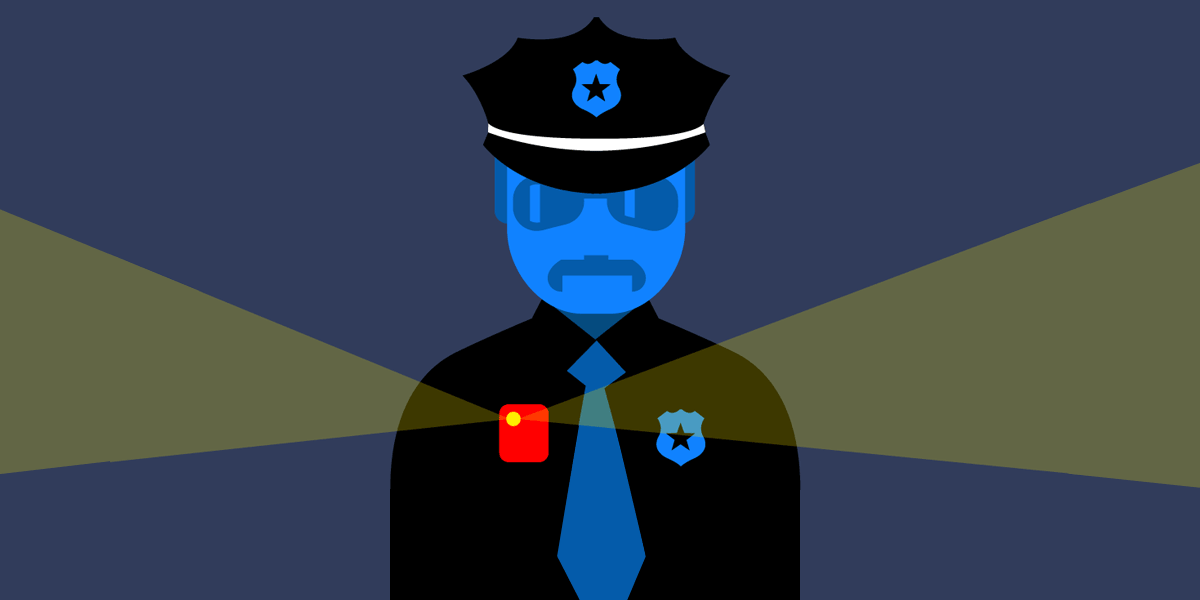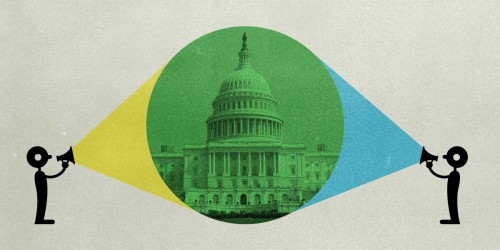Reformers often tout police use of body-worn cameras (BWCs) as a way to prevent law enforcement misconduct. But, far too often, this technology becomes one more tool in a toolbox already overflowing with surveillance technology that spies on civilians. Worse, because police often control when BWCs are turned on and how the footage is stored, BWCs often fail to do the one thing they were intended to do: record video of how police interact with the public. So EFF opposes BWCs absent strict safeguards.
While it takes some useful steps toward curbing nefarious ways that police use body-worn cameras, the George Floyd Justice in Policing Act, H.R. 1280, does not do enough. It places important limits on how federal law enforcement officials use BWCs. And it is a step forward compared to last year’s version: it bans federal officials from applying face surveillance technology to any BWC footage. However, H.R. 1280 still falls short: it funds BWCs for state and local police, but does not apply the same safeguards that the bill applies to federal officials. We urge amendments to this bill as detailed below. Otherwise, these federally-funded BWCs will augment law enforcement’s already excessive surveillance capabilities.
At a minimum, H.R. 1280 must be amended to extend the face surveillance ban it mandates for federal BWCs, to federally-funded BWCs employed by state and local law enforcement agencies.
As has been our position, BWCs should adhere to the following regulations:
Mandated activation of body-worn cameras. Officers must be required to activate their cameras at the start of all investigative encounters with civilians, and leave them on until the encounter ends. Otherwise, officers could subvert any accountability benefits of BWCs by simply turning them off when misconduct is imminent, or not turning them on. In narrow circumstances where civilians have heightened privacy interests (like crime victims and during warrantless home searches), officers should give civilians the option to deactivate BWCs.
No political spying with body-worn cameras. Police must not use BWCs to gather information about how people are exercising their First Amendment rights to speak, associate, or practice their religion. Government surveillance chills and deters such protected activity.
Retention of body-worn camera footage. All BWC footage should be held for a few months, to allow injured civilians sufficient time to come forward and seek evidence. Then footage should be promptly destroyed, to reduce the risks of data breach, employee misuse, and long-term surveillance of the public. However, if footage depicts an officer’s use of force or an episode subject to a civilian’s complaint, then the footage must be retained for a lengthier period.
Officer review of footage. If footage depicts use of force or an episode subject to a civilian complaint, then an officer must not be allowed to review the footage until after they make an initial statement about the event. Given the malleability of human memory, a video can alter or even overwrite a recollection. And some officers might use footage to better “testily,” or stretch the truth about encounters.
Public access to footage. If footage depicts a particular person, then that person must have access to it. If footage depicts police use of force, then all members of the general public must have access to it. If a person seeks footage that does not depict them or use of force, then whether they may have access must depend on a weighing by a court of (a) the benefits of disclosure to police accountability, and (b) the costs of disclosure to the privacy of a depicted member of the public. If the footage does not depict police misconduct, then disclosure will rarely have a police accountability benefit. In many cases, blurring of civilian faces might diminish privacy concerns. In no case should footage be withheld on the grounds it is a police investigatory record.
Enforcement of these rules. If footage is recorded or retained in violation of these rules, then it must not be admissible in court. If footage is not recorded or retained in violation of these rules, then a civil rights plaintiff or criminal defendant must receive an evidentiary presumption that the missing footage would have helped them. And departments must discipline officers who break these rules.
Community control over body-worn cameras. Local police and sheriffs must not acquire or use BWCs, or any other surveillance technology, absent permission from their city council or county board, after ample opportunity for residents to make their voices heard. This is commonly called community control over police surveillance (CCOPS).
EFF supported a California law (A.B. 1215) that placed a three-year moratorium on use of face surveillance with BWCs. Likewise, EFF in 2019, 2020, and 2021 joined scores of privacy and civil rights groups in opposing any federal use of face surveillance, and also any federal funding of state and local face surveillance.
So we are pleased with Section 374 of H.R. 1280, which states: “No camera or recording device authorized or required to be used under this part may be equipped with or employ facial recognition technology, and footage from such a camera or recording device may not be subjected to facial recognition technology.” We are also pleased with Section 3051, which says that federal grant funds for state and local programs “may not be used for expenses related to facial recognition technology.” Both of these provisions validate civil society and over-policed communities’ long-standing assertion that government use of face recognition is dangerous and must be banned. However, this bill does not go far enough. EFF firmly supports a full ban of all government use of face recognition technology. At a minimum, H.R. 1280 must be amended to extend the face surveillance ban it mandates for federal BWCs, to federally-funded BWCs employed by state and local law enforcement agencies. For body-worn cameras to be a small part of a solution, rather than part of the problem, their operation and footage storage must be heavily regulated, and they must used solely to record video of how police interact with the public, and not serve as trojan horses for increased surveillance.












